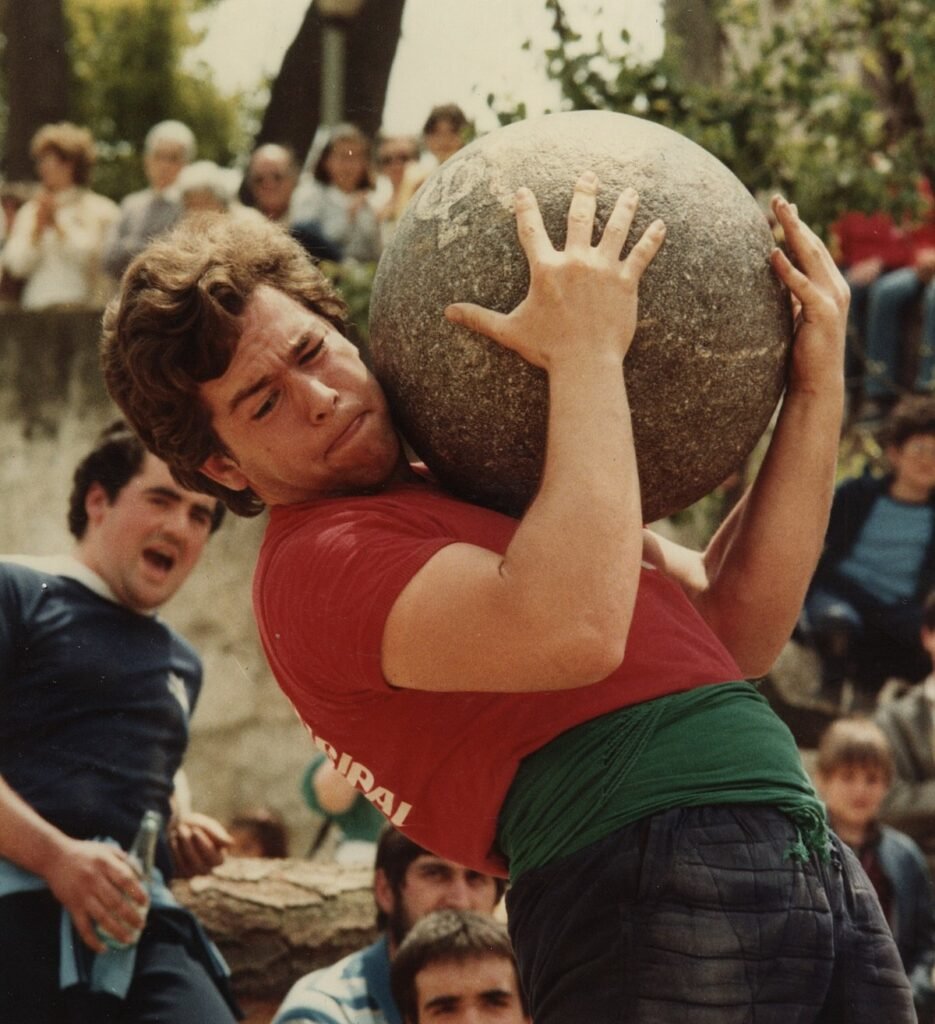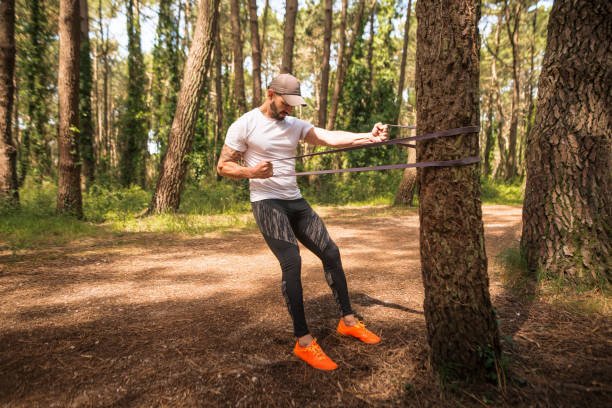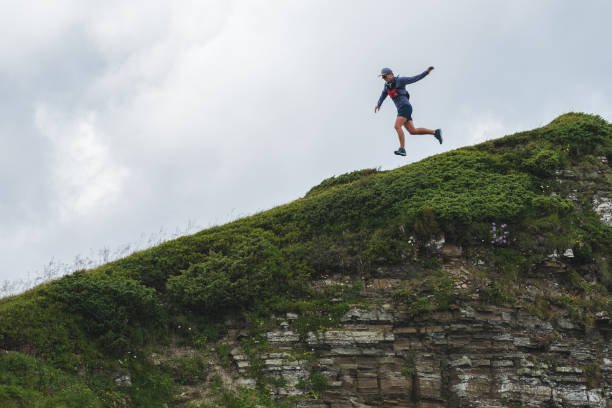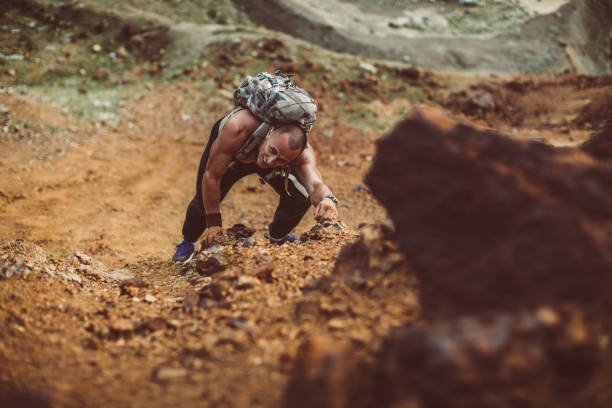“When was the last time you trained without mirrors, machines, or music? Out in the wild, every rep counts because your life might depend on it.”
Forget crowded gyms, sterile weights, and predictable routines. Off-grid fitness is the raw, unfiltered way to build real strength — the kind of strength our ancestors forged while surviving the wild.
This isn’t just exercise — it’s a lifestyle of power, adaptability, and discipline rooted in nature. Whether you’re a modern survivalist, a weekend warrior, or a man simply craving physical and mental toughness, these wilderness workouts will reshape you.
This is your blueprint to train like an alpha, off the grid, with nothing but the world around you.
Table of Contents
🔥 What is Off-Grid Fitness?
Off-grid fitness is a return to the roots of human strength — training without dependence on commercial gyms, electricity, or high-tech gadgets.
It taps into the primitive movements and survival techniques once essential for hunting, gathering, and protecting. Every stone you lift, every hill you sprint, and every log you press is a reminder of your innate power — one that modern life often dulls.
In a survivalist lifestyle, fitness is not cosmetic. It’s practical.
- Can you carry your supplies through dense woods?
- Can you climb a tree to escape a predator?
- Can you sprint up a hill with a weighted pack?
These aren’t gym hypotheticals — they’re real-world competencies.
Off-grid fitness reconnects you to this utility-driven strength while gifting you something rare in the digital age: peace of mind, connection to the earth, and an unbreakable will.
✅ The 7 Off-Grid Alpha Challenges
Each of these challenges combines functional strength, endurance, and survival practicality. And because nature is unpredictable, no two workouts are ever the same.
1. Stone Lifting & Carries
There’s something deeply primal about lifting stones. It’s the kind of strength-building that predates dumbbells by millennia.

What You Need:
- Stones of varying sizes (30-150+ pounds)
- Open space for carrying
How to Perform:
- Start by deadlifting a manageable stone to waist height.
- Progress to lifting it to your chest, then your shoulders.
- Once stable, walk for distance: these are stone carries.
- For variety, try bear hug carries or overhead holds with smaller stones.
Why It Works:
- Maximizes grip strength, core stability, and total-body power.
- Teaches balance and how to handle awkward, heavy objects — just like in a survival scenario.
Alpha Tip: Try carrying a stone for a set distance, then increase the weight or extend the distance week by week.
2. Tree Branch Pull-Ups & Climbing
Forget the polished pull-up bar. Find a sturdy branch or vine — it’ll test your grip and stability in ways a gym bar never could.

What You Need:
- A thick tree branch, roughly 8-12 feet off the ground.
How to Perform:
- Start with basic pull-ups.
- Advance to wide grips, towel pull-ups (for extra grip strain), or even muscle-ups.
- Include tree climbing: challenge yourself to ascend and descend with controlled effort.
Why It Works:
- Develops explosive upper-body power.
- Enhances the grip, forearms, and back muscles — crucial for survival climbing or pulling.
Alpha Tip: If the branch sways, embrace the instability — it activates smaller muscles and forces control.
3. Log Presses & Squats
Logs don’t have perfect symmetry. That’s why they make phenomenal training tools — unstable, heavy, and irregular.

What You Need:
- A log heavy enough to challenge your strength without compromising safety.
How to Perform:
- Overhead Press: Hoist the log to your chest, then press overhead.
- Front Squats: Hug the log to your chest and perform deep squats.
- Shoulder Loads: Lift the log onto your shoulder and squat or walk.
Why It Works:
- Strengthens shoulders, triceps, legs, and core simultaneously.
- Mimics real-life tasks like moving debris, logs for shelter, or equipment.
Alpha Tip: Progressively seek heavier logs or increase reps.
Add a time cap: how many presses can you do in 3 minutes?
4. Resistance Bands with Trees
When nature meets modern simplicity, you get bands anchored to trees — transforming any forest into a full gym.

What You Need:
- Heavy-duty resistance bands
- A tree trunk for anchoring
How to Perform:
- Rows: Band around tree, pull towards your torso for back strength.
- Chest Press: Face away from the tree and push bands forward.
- Rotational Core Work: Twist against band resistance for core activation.
- Band Sprints: Attach to your waist and sprint forward — for power and explosiveness.
Why It Works:
- Low-impact but scalable resistance.
- Builds joint strength, elasticity, and metabolic conditioning.
Alpha Tip: Integrate isometric holds — pulling and holding the band without movement builds static strength essential for carrying heavy loads.
5. Cliff Sprints & Hill Runs
Climbing a steep slope is the ultimate test of leg power, cardiovascular strength, and mental toughness.

What You Need:
- A steep hill, cliff path, or sand dune.
How to Perform:
- Sprint uphill at near-max intensity.
- Walk back down for recovery.
- Repeat for 6-12 rounds depending on fitness.
Why It Works:
- Trains explosive power, VO2 max, and fast-twitch muscles.
- Amplifies fat loss and builds functional strength.
Alpha Tip:
Once you master this, add:
- A weighted vest
- Sandbags
- Or sprint in intervals of time, not distance.
6. River Resistance Training
Water is nature’s secret resistance tool. Every movement is slowed, every muscle engaged.
What You Need:
- A safe, shallow river or stream (waist-high)
How to Perform:
- Walking Lunges through water for quad and glute strength.
- Push-ups: On the riverbank or submerged for added resistance.
- Upstream Walking/Sprinting: Use the current to increase drag.
Why It Works:
- Reduces joint stress while offering consistent resistance.
- Improves circulation, recovery, and stamina.
Alpha Tip: Try submerged log lifts for a next-level challenge. It combines resistance from water and weight.
7. Crawl Drills Over Natural Terrain
Mastering the crawl isn’t just for the military — it’s fundamental to survivalist mobility.

What You Need:
- Open space, uneven ground, grass, dirt, or rocks.
How to Perform:
- Bear Crawls: On hands and feet, hips low, forward motion.
- Army Crawls: Stay low, chest near the ground, elbows and knees only.
- Crab Walks: Face upwards, move backward with hips off the ground.
Why It Works:
- Enhances mobility, shoulder health, and core strength.
- Prepares you for tight spaces, evasion, or navigating obstacles.
Alpha Tip: Combine crawling with sprints or obstacles for a mini-survival course.
🧠 The Mental & Survival Edge of Off-Grid Training
Training in nature is as much for the mind as the body.
When you train off-grid:
- You adapt to the unexpected — no two logs or stones are the same.
- You develop situational awareness.
- You become immune to the distractions and comforts that weaken resolve.
You’re not just building a body; you’re crafting a mindset that thrives under pressure, that laughs in the face of discomfort.
Plus, being in the wild lowers stress, resets mental fatigue, and enhances cognitive function. In survival, a clear mind is your best weapon.
🎒 Essential Gear for Off-Grid Fitness
Minimal gear, maximum effect. Here’s what to pack:
- Heavy-Duty Resistance Bands: Portable, versatile.
- Tactical Gloves: Protect hands from splinters, stones, rough bark.
- Hydration Pack: Always stay hydrated in remote areas.
- Minimalist Trail Shoes: Grip, flexibility, and comfort.
- Weighted Vest: Optional but powerful for progression.
You don’t need much — just the will to train.
⚠️ Safety & Sustainability Tips
- Inspect nature’s equipment: Check logs, stones, and branches before lifting or climbing.
- Warm up thoroughly: Prevent injury with mobility drills and dynamic stretching.
- Respect the environment: Take nothing but memories, leave nothing but footprints.
- Be mindful of wildlife: Always stay aware of surroundings to avoid dangerous encounters.
Off-grid fitness is a partnership with nature — treat it with reverence.
✅ Off-Grid Fitness FAQ — 20 Essential Questions Answered
1. What is off-grid fitness?
Off-grid fitness is a form of physical training done outdoors without relying on traditional gyms, machines, or electricity. It uses nature — stones, logs, hills — to build strength, endurance, and resilience.
2. Who is off-grid fitness best suited for?
Anyone looking to develop real-world strength, survival skills, or mental toughness can benefit. It’s especially ideal for survivalists, adventurers, and those seeking a primal connection to fitness.
3. Do I need any equipment for off-grid fitness?
Mostly, no. Nature provides everything: stones, trees, water, and hills. However, tools like resistance bands, tactical gloves, and hydration packs can enhance the experience.
4. Can beginners start with off-grid workouts?
Yes, but start with lighter, manageable challenges. Focus on technique before increasing weight, distance, or intensity.
5. How is off-grid fitness different from regular bodyweight workouts?
While both use minimal equipment, off-grid fitness incorporates natural resistance and unpredictable environments, forcing greater adaptation and functional strength.
6. Is it safe to train in the wild?
Yes, if precautions are taken. Always inspect equipment (like branches and stones), stay aware of wildlife, hydrate, and warm up properly.
7. Can I build muscle with off-grid fitness?
Absolutely. Lifting stones, pressing logs, and climbing trees provide progressive overload, which is key to muscle growth.
8. How do I track progress with off-grid training?
Measure:
- Distance carried
- Weight of stones or logs
- Number of repetitions
- Time taken for sprints or crawls
Progress is personal but trackable with a notebook or phone.
9. How often should I train off-grid?
2-4 times per week is effective, depending on intensity. Recovery is important, especially after heavy lifting or sprint sessions.
10. What’s the best time of day to train outdoors?
Early morning or late afternoon to avoid extreme heat. However, training in diverse conditions can also enhance adaptability.
11. Are off-grid workouts good for weight loss?
Yes. The combination of strength, cardio, and full-body engagement burns calories efficiently while building muscle.
12. What should I wear for off-grid workouts?
- Durable, flexible clothing
- Trail shoes or barefoot if terrain allows
- Tactical gloves for hand protection
- Weather-appropriate layers
13. How do I warm up before off-grid training?
Dynamic stretches, mobility drills, light jogging, and band work prepare the body for the unique strains of outdoor exercise.
14. Can I combine off-grid fitness with traditional gym workouts?
Definitely. Many combine both to reap the benefits of structured gym training and the unpredictability of nature-based workouts.
15. Is off-grid fitness effective for mental health?
Yes. Training outdoors reduces stress, improves mood, and boosts mental clarity thanks to nature exposure and physical exertion.
16. How do I stay hydrated during off-grid workouts?
Carry a hydration pack or water bottles. For longer sessions, purifying tablets or a portable water filter are useful in remote areas.
17. What if I live in the city — can I still practice off-grid fitness?
Yes. Parks, beaches, and urban trails can be adapted for many off-grid challenges. You don’t need remote wilderness to start.
18. What body parts are most trained through off-grid routines?
Primarily:
- Back and shoulders (pull-ups, climbing)
- Legs (hill sprints, carries)
- Core (crawling, log lifts)
- Grip strength (stone lifting, bands)
19. Can off-grid fitness help with survival preparedness?
Absolutely. It builds the physical capacity to perform in real-life emergencies: climbing, carrying, sprinting, and navigating obstacles.
20. How do I get started with off-grid fitness?
Start simple:
- Choose a local outdoor spot
- Try one challenge like stone carries or hill sprints
- Gradually increase difficulty
- Track your progress weekly
Remember, the key is consistency and respect for nature.
✅ Become the Off-Grid Alpha
The gym is convenient — but the wild is transformative.
If you want more than superficial strength, if you crave a body and mind forged in real challenge, then off-grid fitness is your calling.
With these 7 Alpha Challenges, you’ll build:
- Raw, usable strength
- Unshakeable mental toughness
- Survival-ready conditioning
So the question is — are you still just “working out”? Or are you preparing for life itself?
👉 Take the first step: choose ONE challenge this week, dominate it, and claim your place as an Off-Grid Alpha.
Post your progress, inspire others, and let the world see that real strength is built where there’s no Wi-Fi — just willpower. Subscribe to MindGearMen.


